I love walking through the woods after the winter and noticing the first edibles of spring. Seeing nettles, sochan, and ramps after a long winter gets me excited. Not so with garlic mustard (Alliaria petiolata)
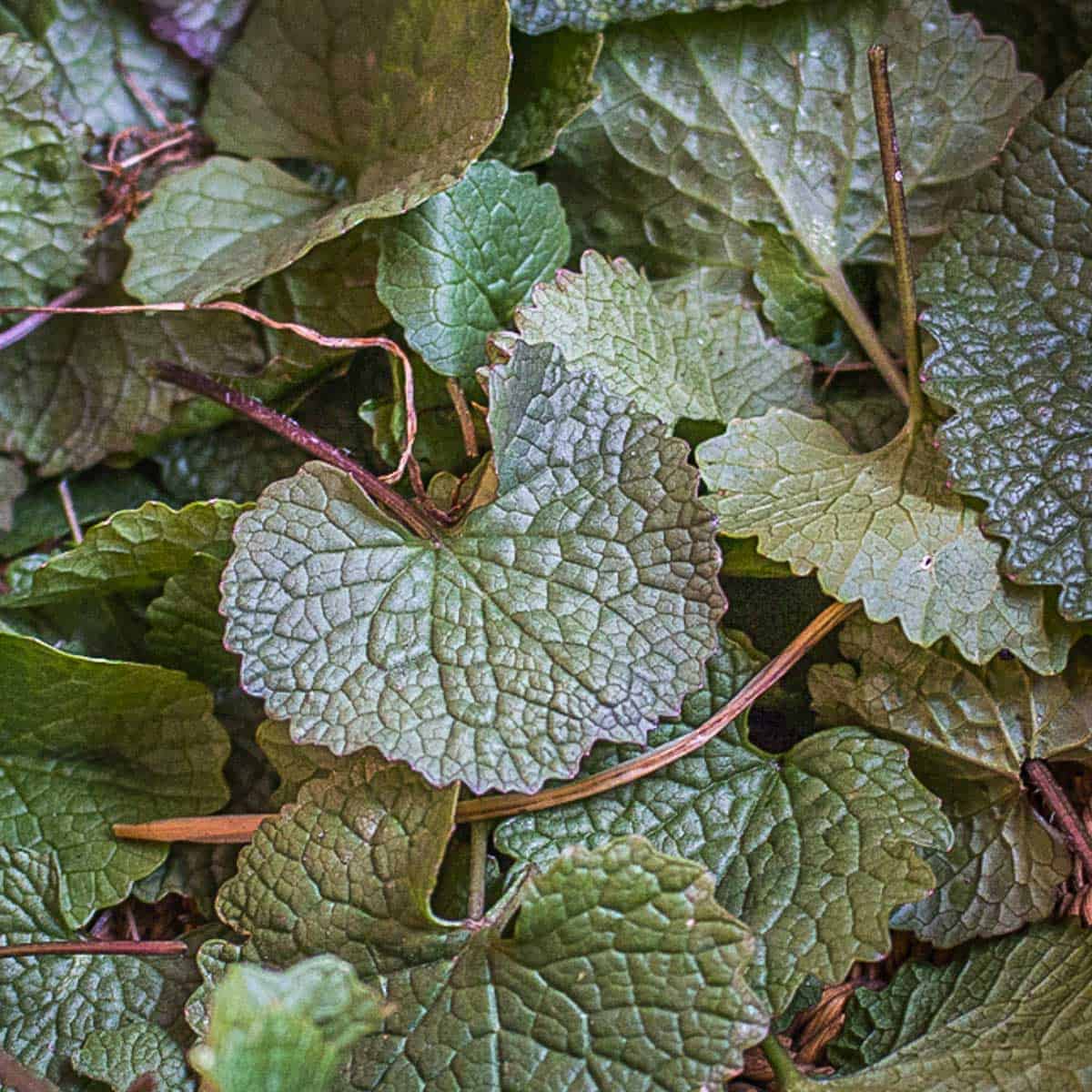
Unlike most of the foraging posts about edible plants on this site, this post is less about eating. I focus more on removal, control, or destruction by napalm.
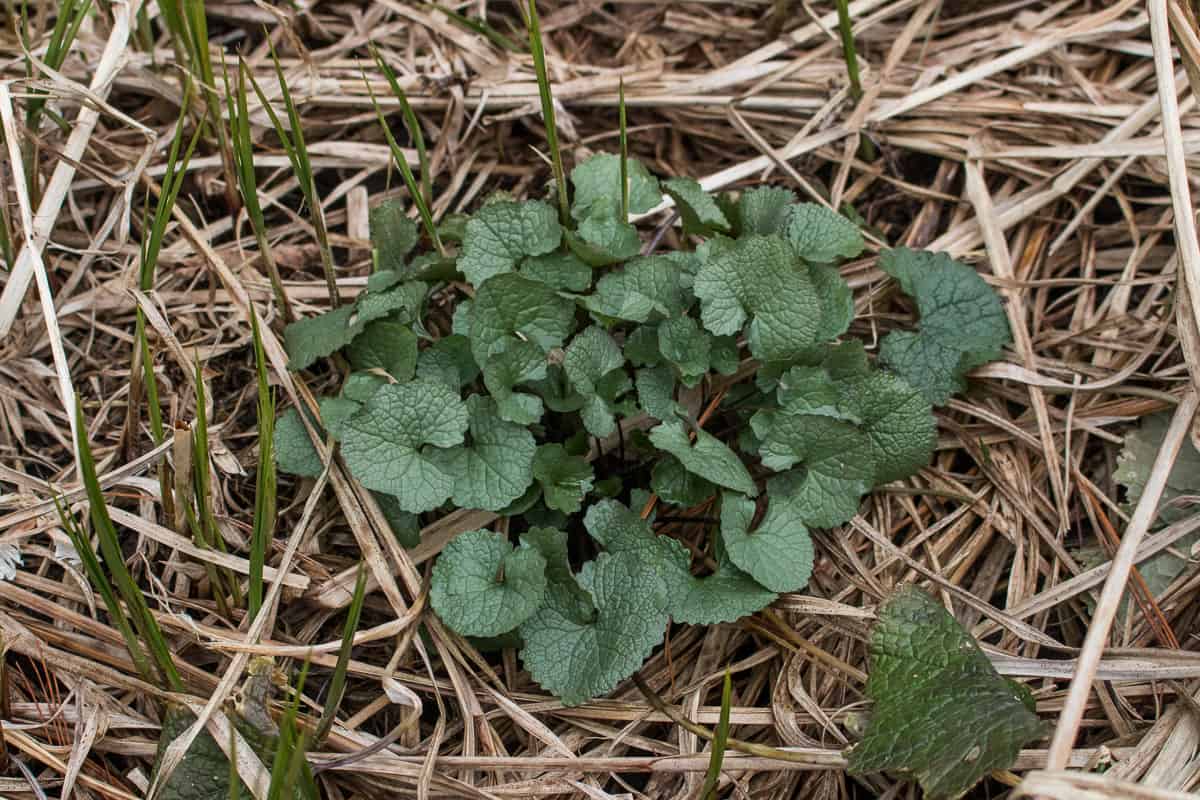
The plant is edible and highly invasive. It constitutes a threat to other plants I eat. So, while you might see the occasional recipe using the plant here, know that it's seasoned with spite.
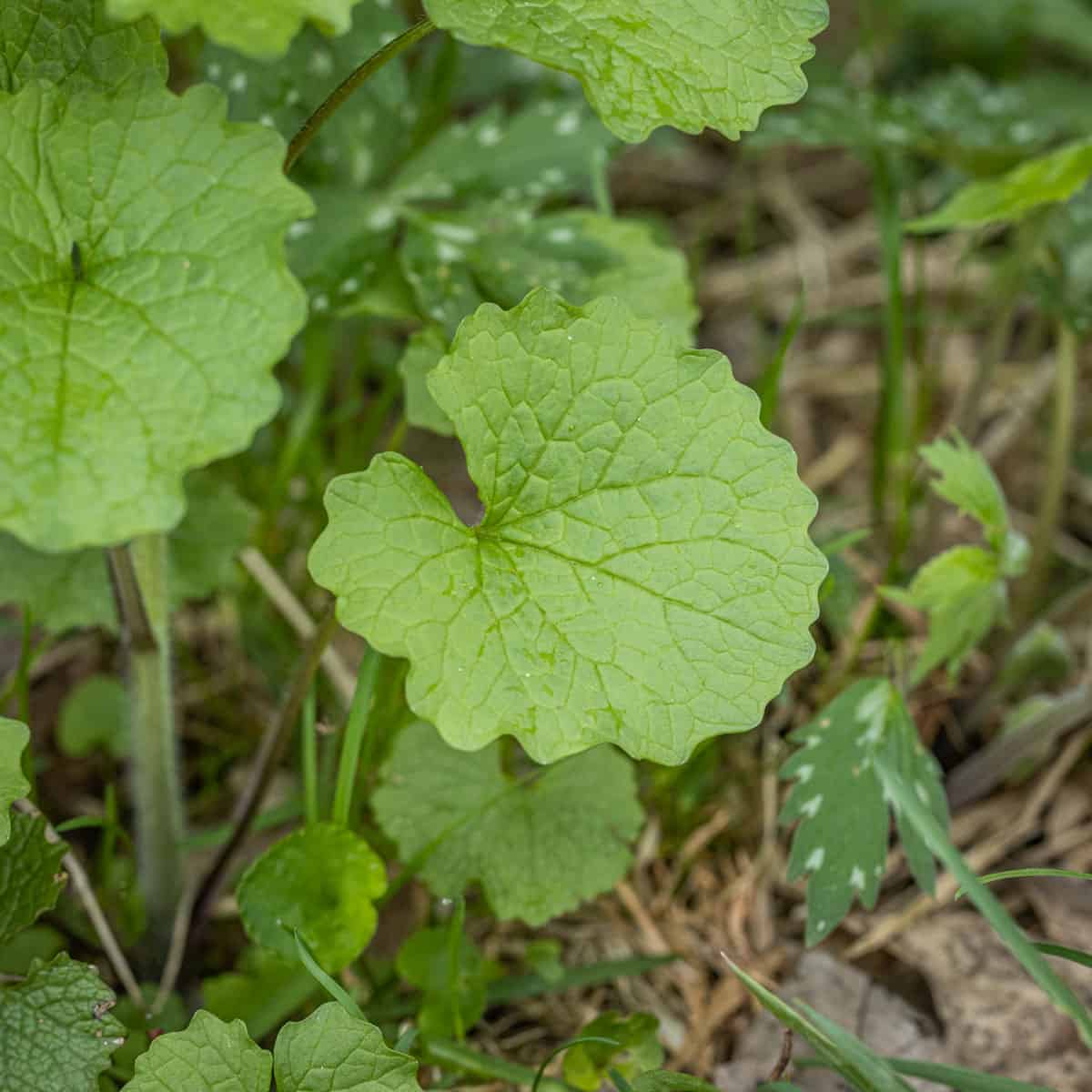
Garlic Mustard Identification
Garlic mustard is a biennial herb, meaning each plant goes through two years of growth. First year plants will appear as teeny tiny sprouts. They're hard to see unless you're looking for them.
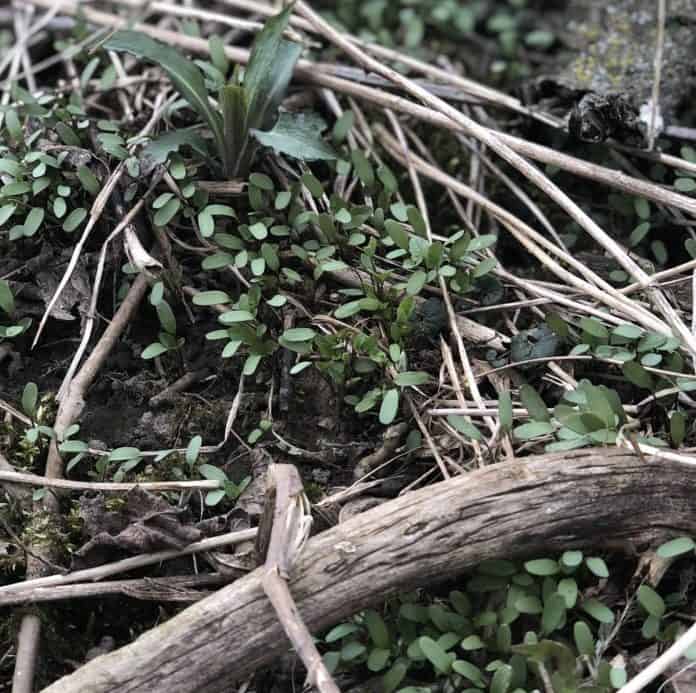
Second year plants grow basal rosettes that make tall flower stalks, creating seeds to spread the plant. You must pull these before they make flowers.
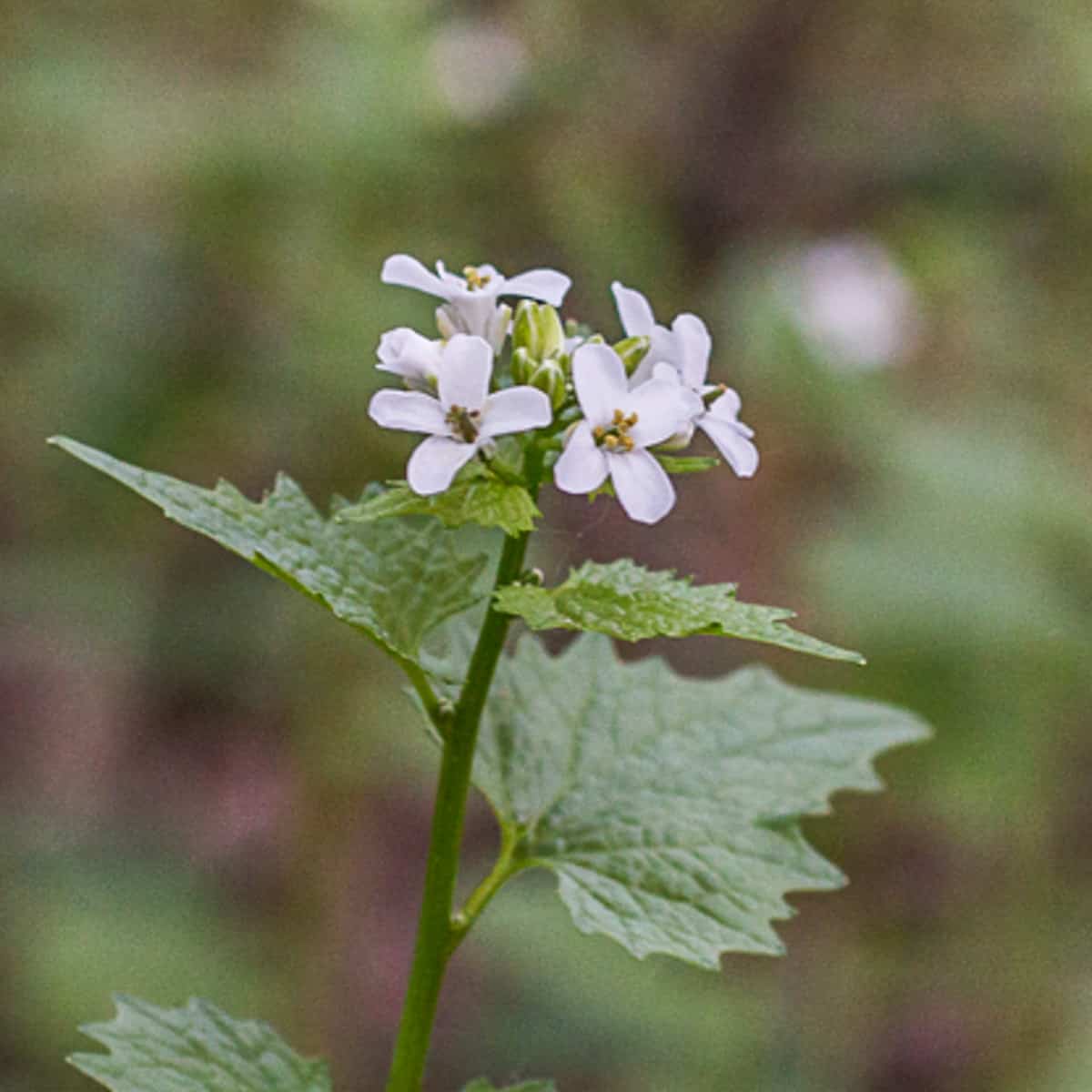
It's a common plant on roadsides, creeks, wilderness areas, open forests and towns. The rosettes are easy to spot at a distance.
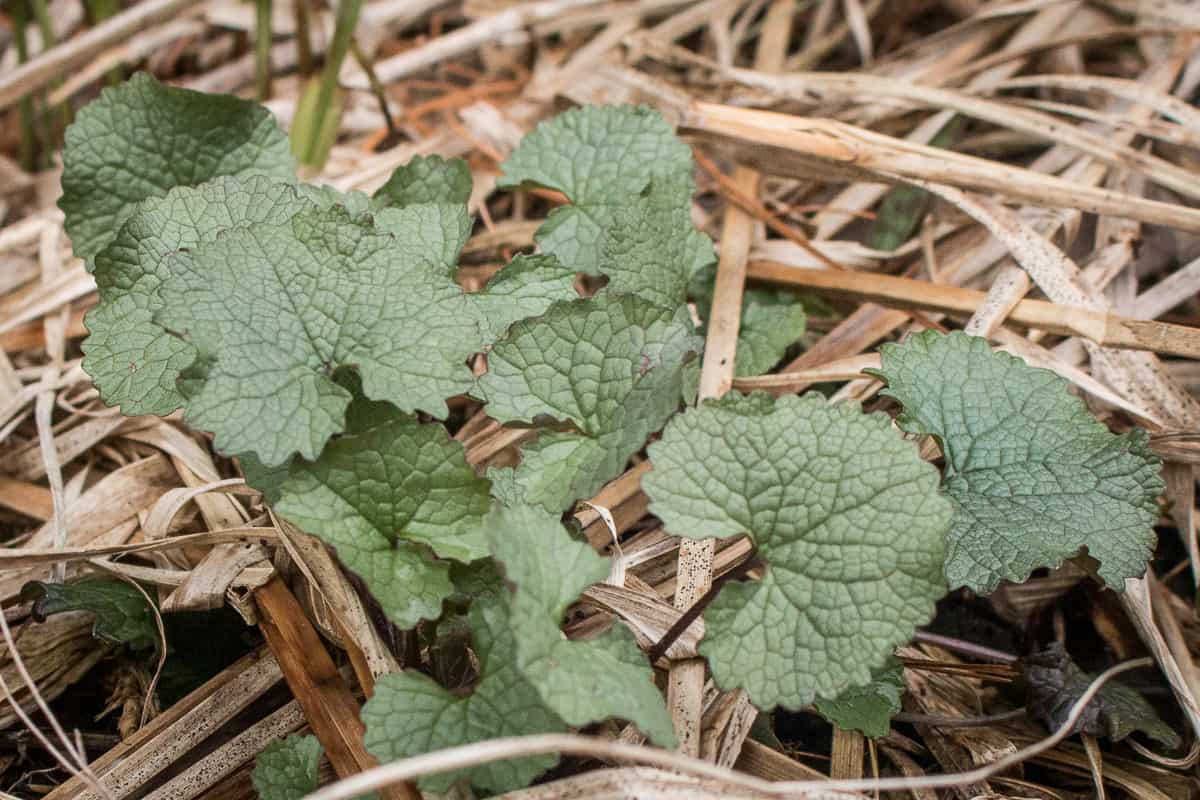
An Invasive Noxious Plant
The plant was brought to North America by Europeans as a food plant in the 1800's. Just like watercress, and plenty of garden ornamentals like buckthorn or creeping bellflower that have also gone feral.
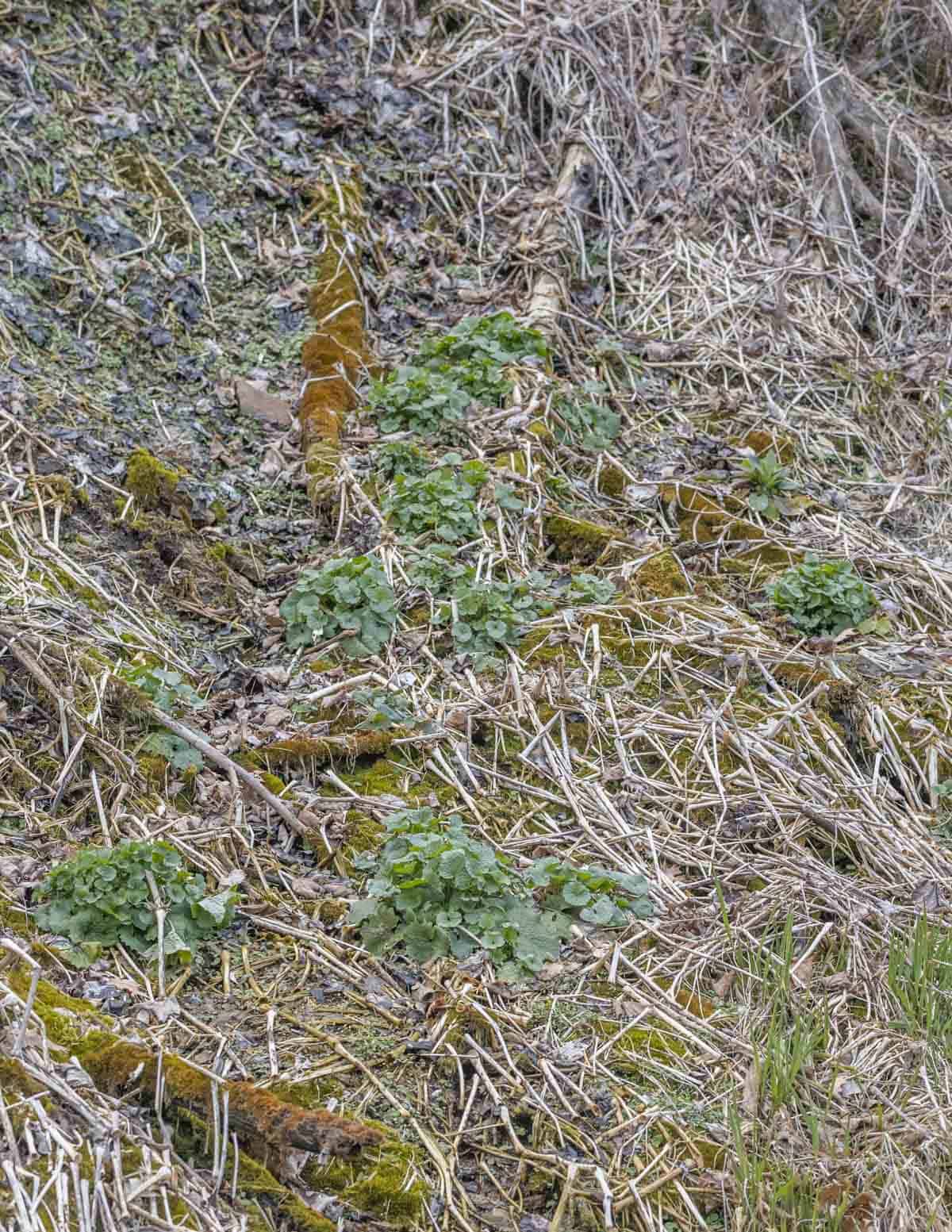
The plant comes up quickly in early Spring, encroaching on native species of the forest understory like tree seedlings and eventually crowding them out. It's aggressive, a prolific seeder. To me it's a plague, and it should be for anyone who values native plants in North America.
Naturalized in Europe, not the U.S.
Friends of mine from Europe get excited to see a familiar food plant they call Jack by the Hedge. They don't see it as the plague others might in the United States.
In Europe garlic mustard has it's place in the food chain and it's widely appreciated as a food plant. It doesn't spread quickly there as it does in North America. This is because it's held in check by other plants.
Over time in North America, garlic mustard will naturalize and become part of the local flora. But, the harm it will cause can endanger other plants in the process.
Allellopathy
An invasive plant that can crowd out native flora, garlic mustard also has allellopathic properties it uses against other plants.
Allellopathy is when a plant produces chemicals that can help stop the growth of other plants around them. That, combined with it's prolific seeding, spells bad news for native plants.
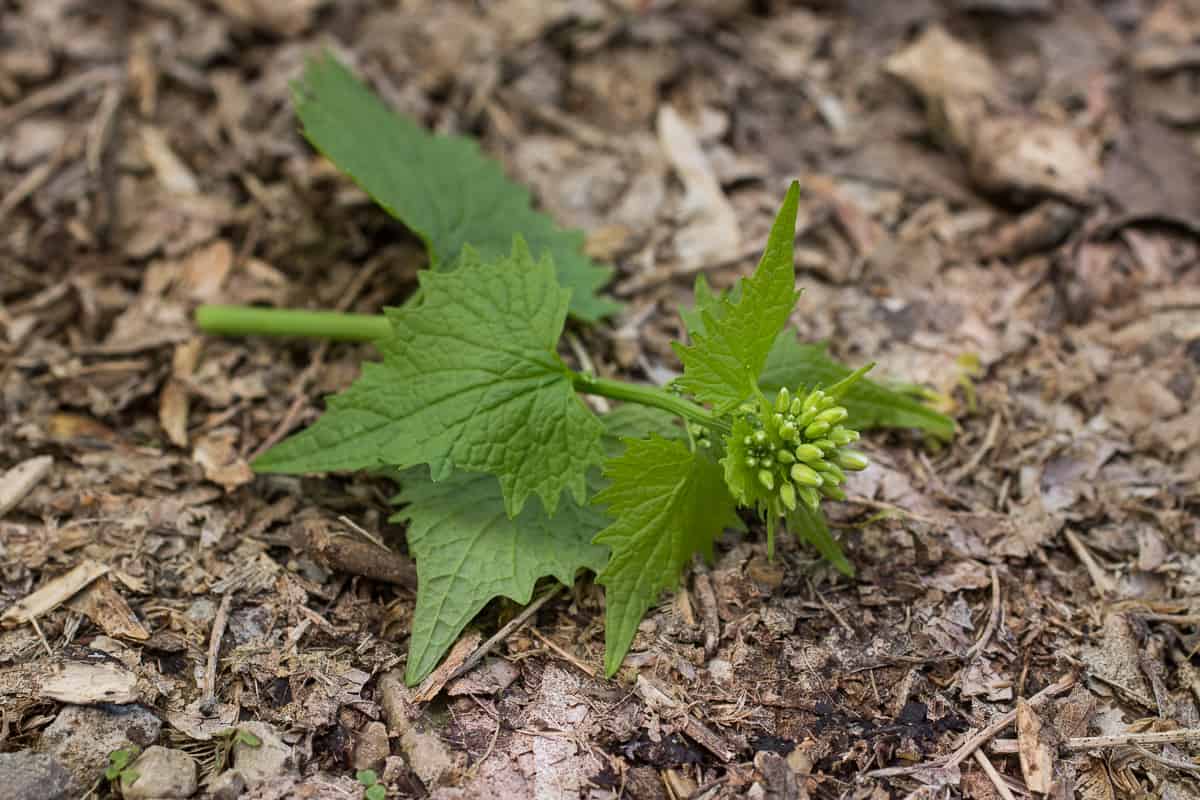
Garlic Mustard Plant Removal / Management
Some of my peers may say things like "eat the invasives" or be an "invasive eater". I appreciate the sentiment but it's not that simple.
Picking a few garlic mustard leaves to post on your Instagram might make you look like you're helping. To be clear: you're not going to make an actual difference in the diversity of your local woods.
I don't like using herbicides, but, with garlic mustard I'll be honest. The trade off between killing the plant using chemicals to restore native flora is a choice I've considered.
It's hard to remove or control garlic mustard without chemicals. But, with careful, regular, attention, it can be managed.
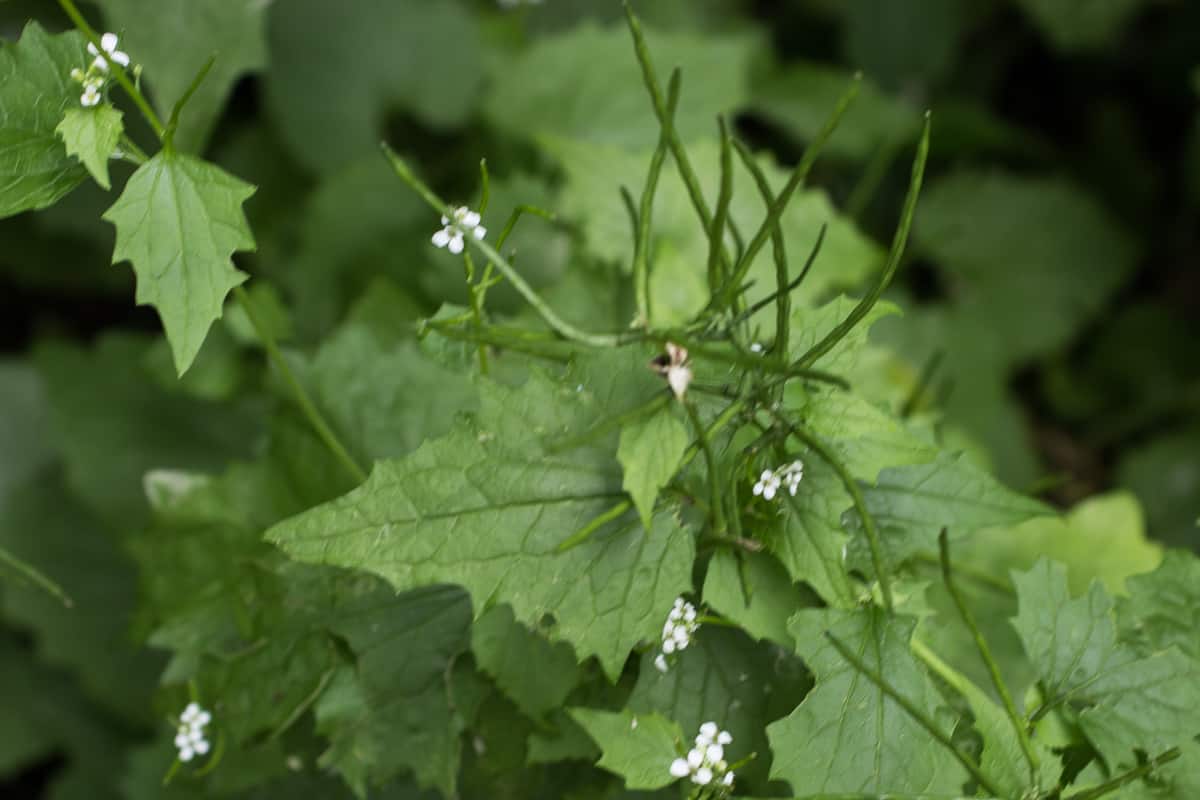
To manage garlic mustard without Round Up you'll need a few friends, and proper timing. Here's a few tips.
Tips
- Hand pulling the garlic mustard before it makes seeds is the most organic way to remove it.
- Organize GM pulls with friends. Promise your helpers food and alcohol for a better showing.
- Pull up all plant part, including the roots.
- Do not compost garlic mustard or it could spread by seed. Put the plants in black trashbags and allow to die in the sun. Alternately, call a priest to excise it.
- Return occasionally to check on the progress of the plants and notice new seedlings, or colonies of flowering plants that were missed.
- Return the next year and repeat to remove second year plants. Then return the next year.
With regular pulling by groups of people, you can make a difference. Over time you will deplete the seed bank held by the colony of plants.
The battle against the plant is slow, and If you want to control it and keep a biologically diverse woodland, it can take years.
Cooking Garlic Mustard
Garlic mustard tastes very bitter, so it's best used in a blend or greens. I also blanch it in boiling salted water before eating.
The shoots are the most tender, and the best part to eat. Common (but forgettable) recipes are garlic mustard pesto, and baked garlic mustard chips.
You'll find a selection of my favorites below.
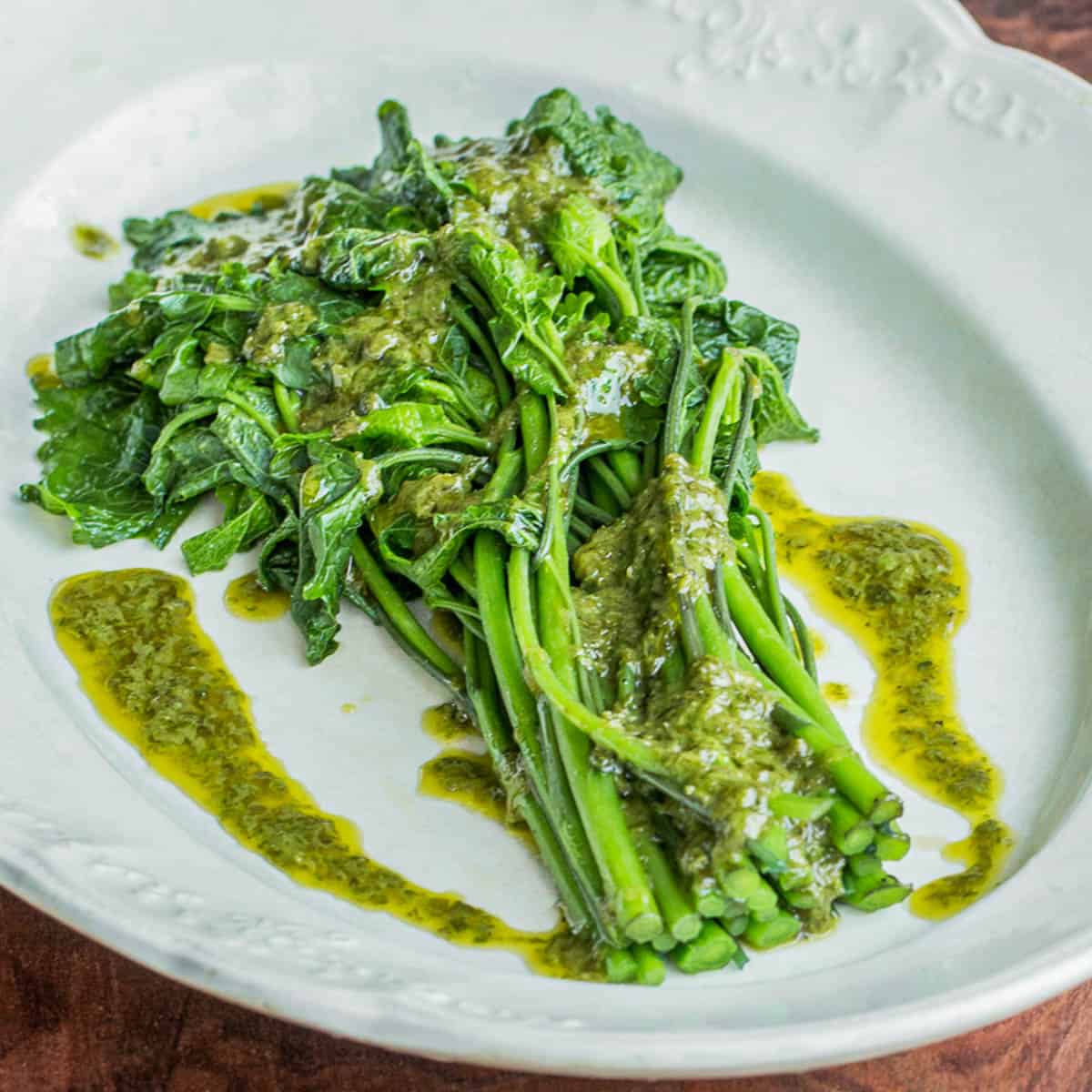
Further Reading
MN DNR on Garlic Mustard Management
A review of garlic mustard (Alliaria petiolata, Brassicaceae) as an allelopathic plant
Allelopathy as an Invasive Mechanism for the Invasive Species Alliaria petiolata (Garlic Mustard)
Allelopathic inhibition of germination by Alliaria petiolata (Brassicaceae)

desiree
I can understand the concern and reluctance to not pull garlic mustard wherever it is seen. However, my inclination is to lean into invasive plants. Harvest the hell out of them, individually and commercially. Invasives have never been successfully eradicated. Only mother nature handles those tall orders.
I have garlic mustard in my Vermont back yard. Over the past five years, I've watched it slowly take over a couple of other weeds in that area. But now GM is up against other aggressive and/or invasives including wild chervil, virginia creeper, day lilies, crabgrass, sensitive fern. Let the battles begin!
Alan Bergo
It be a lot easier to lean into if it tasted better imo. Other edible invasives like nettles just don’t pose a threat to native species in the same way garlic mustard does.
Sara Kuebbing
Hi Alan,
I was excited to read your post, and a little about your background! I am an ecologist who has been working to stem the tide of "eat the invasives" campaigns that suggest that we can use culinary solutions to cure some of these widespread and highly invasive species. I agree that many of them are good to eat and that harvesting can be an effective activity for educating people about invasive species, but I think that there are many downsides to these campaigns that are important to recognize. It's so good to know that there are talented chefs and foragers out there who are spreading the same message! Thank you! - Sara
Alan Bergo
Thanks Sara. I couldn't agree more. People have the best intentions (although sometimes they just want likes) but they need to know the truth.
Samuel Schaperow
In some ways unfortunate for the plant, John Kallas wrote an excellent chapter on garlic mustard. He showed how it is one of the most nutritious leafy greens ever analyzed. He also showed how to deliciously to use it raw with beans, raisins, vinegar, and a little seasoning. We've made loads and loads of that recipe. It can also be boiled to change it to a mild leafy green. The young plants are tender, and there is a technique to gather leaves very quickly from older plants, with the leaves being versatile, especially of chopped. The pesto people have done is okay. They can also be delicious if dehydrated and adding ingredients that include nutritional yeast. This may be the one plant most worthy of reconsideration.
Alan Bergo
Yeah, I know I come across a little pointed in regards to the plant, but with good reason. People need to understand that the trends on social media of claiming to do good by eating it doesn't make a difference at all if they're only removing the above-ground portion of the plant. I'm actually planning an event in a month focused specifically on teaching people what they can make with it in collaboration with a conservation group in MN.
When we're discussing a non-native, highly invasive plant like GM, I think it's better to be a little alarmist than say, "oh, eventually it will naturalize itself". Naturalization won't happen in our lifetime, and by the time it happens, whole swaths of native plants it's encroaching on could be extinct.
Renee west
Good take on garlic mustard, I feel the same way. Eat it if I see it, but I hate the plant.
Alan Bergo
Yep not my favorite plant. Almost time to pull it in the ramp patch.
Dave J Taft
Thank you for your comments and sophisticated understanding of Garlic Mustard's "presence" in North America. I work for the National Park Service in NYC...for many years, the plant (SOMEHOW) did not exist in the refuge where I work. After some extensive (and misguided) "revegetation" efforts, it has been introduced.
Today, I went out and bitterly (as you say) yanked as many of the second year rosettes as I could...sadly, it is so prolific, I realize how futile my efforts are, and just how lucky we were not to have this plant for so long.
Please publish more recipes! I'm going to make your ricotta with garlic mustard...but other recipes would be welcome too.
Alan Bergo
Thanks Dave, unfortunately I don't know how much more garlic mustard content will get put in here. I really dislike the plant, the stems can be alright though.
Collin
Do you know the policy of the MN DNR on pulling these on public land? I tend to uproot them when I'm foraging and wonder if I'm breaking the law as I'm pulling living plant material. Obviously there's a big difference between ramps and garlic mustard, but I wonder how the law sees it.
Alan Bergo
I can't speak specifically to the MN laws. You should pull it whenever and wherever you see it, as much as you're able. If the law would read as such to limit someone harvesting garlic mustard, I would ignore it completely. Some laws are very byzantine and need updating, butternut regulations being a perfect example: the tree is endangered because of butternut canker, but because of how the laws read, not even our own state nursery can attempt to propagate the tree.
Nik Olson
One of the thing I do with garlic mustard is make pesto by the pint. I don't add any more garlic to it but I figure I can pick it until I'm sick of it then put it on toast or with pasta. just the greens, salt, pepper, Parmesan or other hard cheese, some walnuts or pecans and olive oil. it goes pretty fast in a food processor, then I put it in a jar, top it with a little oil and freeze it. I looked today there is some just getting buds on. if you pick after it rains sometimes the roots pull out and you can put those in a bucket to bake in the sun before composting.